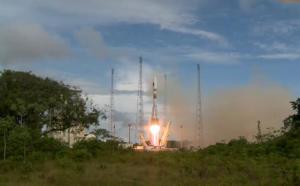On Aug. 22 the first two Galileo FOC satellites launched by Soyuz-STB Fregat-MT rocket were placed into the wrong orbit (https://galileognss.eu/galileo-foc-fm1-and-fm2-status-update/). European government officials said that the hydrazine fuel line was installed too close to a supercold helium line on the Fregat upper stage.
The installation caused the hydrazine to freeze long enough to upset the Fregat stage’s orientation and cause the two satellites’ release into an orbit that is both too low and in the wrong inclination, officials said.
Euro-Russian board discovered that one in four Fregat upper stages at prime contractor NPO Lavochkin in Moscow had the same fuel-line installation. “We have to assume that this was a practice that had gone on in perhaps a quarter of the Fregat stages produced in the past decade, but that it had not affected our launches up to now because of mission-specific aspects like coast time between burns, the number of burns and so on, which can influence the effect of the helium on the hydrazine,” official said. “In any case, we’d like Arianespace, which currently has almost no inspection rights on the Soyuz, to be given more say in quality assurance.”
In the stages without the installation issue, the hydrazine and helium lines were separated so that the supercold helium could not freeze the hydrazine. The design did not foresee any problem in putting the lines together, but in fact that is a problem for some missions.
EU Government and officials are debating how to proceed now. The options are to continue, as scheduled, with the December launch of two more Galileo satellites aboard a Soyuz Fregat rocket, or to wait until next spring or summer and launch four Galileo satellites on a heavy-lift Ariane 5 vehicle.
Officials from ESA and from OHB have said the two satellites are in good health, and like all 22 Galileo satellites being built by OHB were designed to carry more fuel than necessary to accomplish their missions.
One argument for waiting until mid-2015 for the next launch is that it would give ESA and OHB additional time to put the satellites through a rigorous in-orbit test capaign to debug them before launching additional satellites.
The August launch placed the first two FOC Galileo satellites into a wrong orbit that regularly sends them through the Van Allen radiation belts around Earth. While these satellites were built to better withstand radiation than the four Galileo validation spacecraft already in orbit (built by different contractor), regular exposure to radiation will reduce their operational lives.
OHB’s Galileo deputy program manager, Kristian Paulym said he was optimistic that once the satellites’ perigee is raised and their orbit made less eccentric, they can be fitted at least partially into the Galileo program and perform a navigation function.
The first priority, Pauly said, is to take them out of regular contact with the Van Allen belts and adjust their Earth sensors to their new, unplanned view of Earth, which is much closer given the lower altitude.
The commission has purchased Ariane 5 vehicles in addition to Soyuz for Galileo, with each Ariane 5 capable of lifting four Galileo satellites at a time. The first Ariane 5, with a new payload adaptor designed for Galileo, could be launched by mid-2015.

